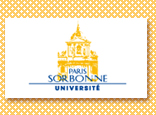|
| Accueil
> Cours
et séminaires > Licence
> LAN 305 - Ressources |
| |
| Société et architecture
en Grande-Bretagne des modèles historiques au dessin assisté
par ordinateur |
| Professeur Marie-Madeleine MARTINET |
| |
| INTERDISCIPLINARY STUDIES |
| |
| Integration
of subject and IT |
 |
IT skills and
notions introduced |
 |
Hyperdocuments
used : description of their interface |
| |
|
|
|
|
 Documents
on 18th c. urban culture may be studied with different
approaches: cartography, architecture, social history,
cultural history. Documents
on 18th c. urban culture may be studied with different
approaches: cartography, architecture, social history,
cultural history.
 Hypermedia
programmes such as the CD-ROM 'Georgian Cities' use the
various options of hypermedia to illustrate this diversity Hypermedia
programmes such as the CD-ROM 'Georgian Cities' use the
various options of hypermedia to illustrate this diversity |
|
|
Navigation
- hypermedia:
a document integrating several media (images, text, sound,
animation) and allowing the users to follow various paths
among the frames according to hyperlinks they select
- interactivity:
the possibility of having options offered to the user
- selecting among several hotspots or hypertext links
which each open different frames
- hotspots:
a part of a screen which is active (if you click on it,
it opens a window or another screen)
- thumbnails:
a small-scale photograph; if you click on it you will
open a full-screen view
- buttons:
circled words opening the corresponding frames
- hypertext
links: words which are active
in "hypertext" - when you click on them they
open another screen of explanations about the highlighted
words (underlined and in blue) |
|
|
Interface elements
-
Cdrom Georgian Cities about 18th c. urban life,
with literary extracts, paintings, maps, musical extracts…
- in each screen, you may either blow up a photograph
of a building, or obtain an explanation on a word….
This is a way of emphasising the multidisciplinary approaches
through which you may contextualise each document
- on a map of a city, a coloured rectangle shows that
if you click on it, you will open a window about the building
placed there; this signals a shift from cartography to
architectural analysis
- the window will first appear as a small photo of the
building; if you click on it you will blow it up (zoom
on it). These are ways of rendering the multiplicity of
scales at which you may study the city.
- eg "map"
- used in literary texts describing cities to refer the
user to frames on the buildings mentioned, or in documentary
texts to obtain extra explanations on the social customs
or institutions alluded to.
|
|
| |
|
|
|
|
|
|
Options
- conditions:
scripts (not visible to the user) specifying that an event
will occur under a specified condition (eg if a user clicks
on part of the frame, a certain window will open, but
if the user clicks on another part, another window will
open)
- text
fields: a text which may be
edited during navigation, eg. words may appear in the
field according to the user's actions (clicking on a word
or on an image), or the user may write in it and the resulting
event will differ according to the words written; these
texts may contain calculations, that the program can perform
- visible/invisible
images
- replacement
of elements
Contextualisation
- site
map: the option of moving from
any section to a table of contents where the current section
is highlighted
-
index:
a tool to browse through a hypermedia programme by selecting
a word from an alphabetical index which takes the user
to the corresponding screen |
|
|
-
used to reproduce the various options that 18th c. people
had in real life, eg putting the user in the position
of an artist having to select a viewpoint, or of ramblers
in a city looking at buildings from several angles as
they walk on
- the text option allows different legends or interpretations
to appear according to the user's choices; the calculation
option may be used to simulate the problem of an engineer
faced with town-planning choices;
- it allows for the alternation of two version of a picture,
eg. a photograph of a building in an unedited state, with
the option of making visible a geometrical diagram
- it allows the author to associate lists of phrases with
corresponding images appearing in turn whenever the user
clicks on a different phrase, eg. describing the various
social codes and illustrating each of them with a picture
- contextualisation
- alternating between synthetic study and contextualisation.
|
|
|
| |
| |
|
| |
| |
|
|
| Cette page est valide
HTML
4.01, CSS2
et accessible A. |
|
|
|
|
 |
Rechercher |
|
| |
|
|
| |
 |
| |
| |
| |
| |
|



